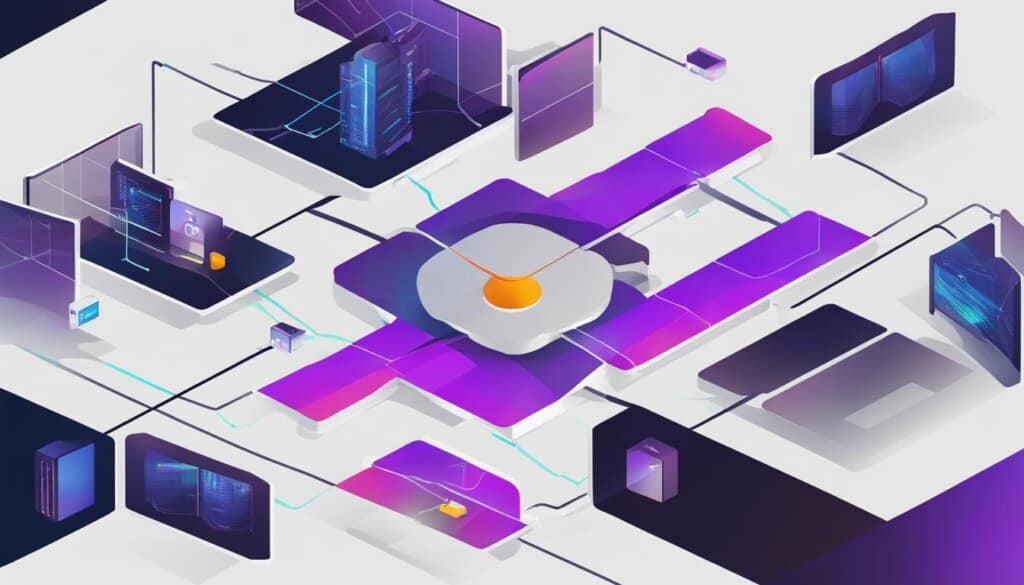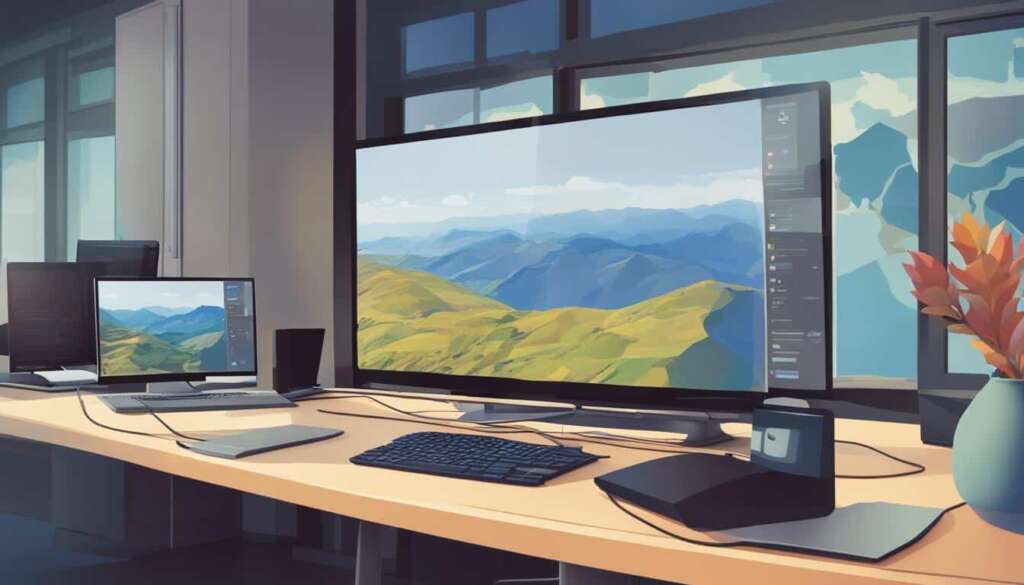Table of Contents
Remote Desktop Protocol (RDP) is a secure network communications protocol developed by Microsoft. It allows users to remotely access and control another computer or server. RDP is commonly used by employees working from home or while travelling, support technicians providing remote assistance, and system administrators for managing and maintaining servers. RDP clients are available for various operating systems and devices, including Windows, macOS, Linux, Android, and iOS.
Now, let’s dive into the details of RDP and explore its features, use cases, how it works, benefits, and alternatives.
Features of RDP
RDP, an abbreviation for Remote Desktop Protocol, offers a range of impressive features that establish it as a preferred choice for remote access and management. These features encompass secure network protocol, efficient remote access, and seamless administration capabilities.
Smart Card Authentication
RDP incorporates smart card authentication, ensuring an added layer of security for user identification and access control. By leveraging smart card technology, users can authenticate themselves securely, mitigating the risks associated with unauthorized access.
Bandwidth Reduction for Low-Speed Connections
With the ability to optimize bandwidth usage, RDP is capable of delivering a smooth remote desktop experience even over low-speed connections. By minimizing data transmission requirements, RDP ensures efficient performance and responsiveness, enabling users to work seamlessly.
Support for Multiple Displays
RDP facilitates the use of multiple displays, allowing users to extend their desktop across multiple screens for improved productivity and enhanced visual workspace. This feature is particularly beneficial for professionals who require expansive screen real estate.
Temporary Disconnection without Logging Off
One of the notable advantages of RDP is the ability to temporarily disconnect from a remote session without logging off. This feature enables users to effortlessly switch between local and remote environments, ensuring convenience and uninterrupted workflow.
RemoteFX Virtualized GPU Support
RDP’s RemoteFX virtualized GPU support enables users to access and utilize the full potential of a virtualized graphics processing unit (GPU). This feature ensures optimized graphics performance, making it suitable for applications that require robust visual rendering, such as design software and multimedia tools.
128-Bit Encryption for Mouse and Keyboard Data
To ensure secure data transmission, RDP employs 128-bit encryption for mouse and keyboard inputs. This encryption protocol safeguards sensitive information, protecting it from potential interception or unauthorized access.
Audio, File, and Printer Redirection
RDP facilitates seamless redirection of audio, files, and printers between the local and remote desktop environments. This capability allows users to utilize their local audio devices, access files stored on their local machine, and print documents using local printers, enhancing convenience and productivity.
Access to Local Ports
With RDP, users can connect and access local ports on their remote desktop, enabling efficient utilization of local resources. This feature enhances flexibility and empowers professionals to work seamlessly with peripherals and devices connected to their local machine.
Clipboard Sharing
RDP enables clipboard sharing between local and remote computers, facilitating the seamless exchange of text and files. This feature streamlines workflows and promotes efficient collaboration by eliminating the need for manual file transfers.
Execution of Remote Desktop Applications on a Local Computer
RDP allows users to run remote desktop applications on their local computer, providing a seamless experience regardless of the location of the application. This functionality enables users to leverage the advantages of remote applications while benefiting from the performance and familiarity of their local machine.
Support for Transport Layer Security
RDP incorporates Transport Layer Security (TLS), a cryptographic protocol that ensures secure communication between the client and the remote server. By utilizing TLS, RDP enhances data protection and confidentiality, mitigating the risks associated with unauthorized access or interception.
RDP is also capable of supporting up to 64,000 independent channels for data transmission, employing 128-bit keys for encryption. This sophisticated encryption protocol guarantees the integrity and confidentiality of transmitted data, making RDP a secure and reliable choice for remote access and management.
| Features | Description |
|---|---|
| Smart Card Authentication | Enhanced security with smart card-based user authentication |
| Bandwidth Reduction | Optimizes bandwidth usage for better performance over low-speed connections |
| Multiple Displays | Supports extended desktops across multiple screens |
| Temporary Disconnection | Ability to temporarily disconnect without logging off |
| RemoteFX Virtualized GPU Support | Utilizes virtualized GPU for optimized graphics performance |
| 128-Bit Encryption | Ensures secure transmission of mouse and keyboard data |
| Audio, File, and Printer Redirection | Seamless redirection between local and remote environments |
| Access to Local Ports | Connect and utilize local ports on the remote desktop |
| Clipboard Sharing | Effortlessly exchange text and files between local and remote computers |
| Execution of Remote Desktop Applications | Run remote desktop applications on the local machine |
| Support for Transport Layer Security | Ensures secure communication using TLS protocol |
RDP Use Cases
Remote Desktop Protocol (RDP) offers a range of versatile use cases, facilitating seamless remote troubleshooting, remote desktop access, and remote administration. Let’s explore each of these applications in more detail:
1. Remote Troubleshooting
In the realm of technical support, RDP plays a crucial role in remote troubleshooting. Whether it’s a corporate help desk or an individual aiding a friend or family member, the ability to access and control computers remotely proves invaluable. With RDP, support professionals can diagnose and fix issues without the need for physical proximity. This efficient approach saves time and resources while ensuring prompt resolution of technical problems.
2. Remote Desktop Access
Another significant use case for RDP is remote desktop access, which enables users to access their home or office PCs from any location. This functionality empowers individuals to work remotely, providing access to important files, applications, and resources. Whether travelling for business or working from the comfort of their homes, users can leverage RDP to maintain productivity and seamlessly carry out tasks as if they were physically present at their workstation.
3. Remote Administration
RDP also serves as a valuable tool for system administrators who need to manage and configure network servers remotely. With RDP’s capabilities, administrators can make configuration changes, monitor system performance, and carry out maintenance tasks without being physically present in the server room. This flexibility not only saves time and effort but also streamlines the administration process, ensuring efficient management of remote resources.
Overall, RDP empowers users with efficient and effective remote support, access, and management, making it indispensable in various professional settings.
Table: RDP Use Cases
| Use Cases | Description |
|---|---|
| Remote Troubleshooting | Aiding others by accessing and controlling their computers remotely to diagnose and fix issues. |
| Remote Desktop Access | Enabling users to access their home or office PCs from anywhere, facilitating remote work. |
| Remote Administration | Allowing system administrators to configure and manage network servers remotely. |
How Does RDP Work?
RDP, or Remote Desktop Protocol, operates by establishing a dedicated network channel between the client and the remote computer. The client initiates the connection by sending a request to the server, specifying the supported security protocols. Once the server confirms the request, the initial settings are exchanged, including the RDP version, resolution, colour depth, and other parameters.
After the channel connection is established, the security exchange takes place, encrypting all subsequent RDP traffic. The client sends its capabilities, and the server responds accordingly. Finally, the connection is finalized, enabling the secure exchange of data between the client and the remote computer.
RDP employs encryption algorithms and other security measures to ensure the confidentiality and integrity of the transmitted data. This ensures that sensitive information transmitted over the network remains secure from unauthorized access or interception.

Benefits and Concerns of RDP
RDP, also known as Remote Desktop Protocol, offers a number of benefits for remote access and management. One of its major advantages is the secure and encrypted transmission of data, ensuring the confidentiality and integrity of information exchanged between the client and the remote computer. This feature is particularly crucial for businesses that prioritize data security.
Another notable benefit of RDP is that it eliminates the need for a virtual private network (VPN). Unlike VPNs which require additional setup and configuration, RDP provides a direct connection to the remote computer, simplifying the remote access process. This convenience allows users to work remotely from anywhere without the complexity associated with VPN connections.
RDP is especially useful for companies with legacy on-premises IT infrastructure. It enables employees to access and manage their desktops and servers remotely, increasing flexibility and productivity. This capability is particularly valuable in situations where employees need to work from home or when support technicians must provide remote assistance.
RDP Benefits:
- Secure and encrypted data transmission
- No need for a virtual private network (VPN)
- Ability to work remotely from anywhere
- Increased flexibility and productivity
However, along with its benefits, there are also some concerns and security vulnerabilities associated with RDP. Latency issues can arise when using RDP on slow internet connections, resulting in delays and hindered productivity. To mitigate latency, it is advisable to ensure a stable and fast internet connection when utilizing RDP.
In addition, there have been instances of security vulnerabilities related to RDP, such as the BlueKeep flaw, pass the hash attacks, and computer worms. These vulnerabilities highlight the importance of implementing robust security measures and following best practices to minimize the risk of unauthorized access and potential attacks.
RDP Security Concerns:
- Latency issues on slow internet connections
- Potential security vulnerabilities
- Need for additional security measures
When considering the use of RDP, it is essential to weigh the benefits against the potential security concerns. Organizations should conduct a thorough risk assessment and implement appropriate security measures to protect against potential threats.
https://www.youtube.com/watch?v=7_tWpZIg4j0
| Benefit of RDP | Concerns of RDP |
|---|---|
| Secure and encrypted data transmission | Latency issues on slow internet connections |
| No need for a virtual private network (VPN) | Potential security vulnerabilities |
| Ability to work remotely from anywhere | Need for additional security measures |
| Increased flexibility and productivity |
Alternatives to RDP
If you’re looking for alternatives to RDP for screen-sharing and remote control, there are several options available. One popular choice is Screens from Edovia, which allows seamless remote control of macOS and iOS systems. With its user-friendly interface and robust features, Screens provides a reliable solution for remote access and management.
Another alternative is Zoho Assist, a versatile platform that offers both remote support and unattended remote access. With Zoho Assist, businesses can easily provide assistance to clients or access computers for maintenance and troubleshooting purposes, even without user intervention.
In addition, there are other alternatives such as Citrix HDX, PC over IP, and VMware Blast Extreme. These display protocols are commonly used for connecting users to remote or virtual desktops. The choice of protocol often depends on the specific VDI software being used and the organization’s requirements for remote access and management.
When considering RDP alternatives, it is crucial to choose the right solution that meets your organization’s needs. Whether you require powerful screen-sharing capabilities, seamless remote control, or integration with specific VDI software, exploring these alternatives can provide you with the flexibility and functionality you need for efficient remote access and management.
FAQ
What is RDP?
RDP stands for Remote Desktop Protocol, which is a secure network communications protocol developed by Microsoft. It allows users to remotely access and control another computer or server.
What are the features of RDP?
RDP has several noteworthy features, including smart card authentication, bandwidth reduction for low-speed connections, support for multiple displays, the ability to temporarily disconnect without logging off, and 128-bit encryption for mouse and keyboard data, among others.
What are the use cases for RDP?
The main use cases for RDP include remote troubleshooting, remote desktop access, and remote administration. It enables efficient and effective support, access, and management of remote resources.
How does RDP work?
RDP works by establishing a dedicated network channel between the client and the remote computer. The client initiates the connection, and after the channel connection is established, the security exchange takes place, encrypting the subsequent RDP traffic.
What are the benefits and concerns of using RDP?
RDP offers benefits such as secure and encrypted data transmission and the ability to work remotely from anywhere. However, there are also concerns such as latency issues and security vulnerabilities that need to be addressed.
What are the alternatives to RDP?
Some alternatives to RDP include Screens from Edovia, Zoho Assist, Citrix HDX, PC over IP, and VMware Blast Extreme. The choice of protocol often depends on the specific VDI software being used.













